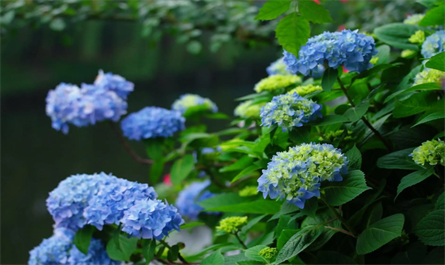The applications of plant growth regulators on hydrangea

1. Promote rooting of cuttings
Indole butyric acid:
Quickly dip the base in 500mg/Lindole butyric acid solution, dry it and insert it into the substrate, and use the full-day intermittent spray method to grow seedlings, which can promote rooting of cuttings and effectively improve the survival rate.
Naphthalene acetic acid (NAA):
Soak in 150mg/L NAA solution for 30 minutes before cutting, which can also promote rooting of cuttings.
2. Tissue culture
6-Benzylaminopurine (6-BA) + Naphthalene acetic acid (NAA) + indole butyric acid or indole acetic acid:
Using hydrangea stem segments with axillary buds as explants, the most suitable proliferation medium is MS + 1.0mg / L 6-BA + 0.2mg / L NAA and MS + 1.0mg / L6-BA + 0.1mg / L indole acetic acid; the rooting medium is 1/2MS + 0.2mg / Lindole butyric acid or 1/2MS + 0.1mg / L indole butyric acid.
3. Dwarf potted plants and improve ornamental value
Daminozide:
Spray 1000~2000mg/LDaminozide solution on the leaves of hydrangea plants one week after potting. The amount of liquid should be enough to completely wet the whole plant. Spray once every 15 days for 4 times in a row. It can significantly reduce the plant height and improve its ornamental quality.
4. Flowering regulation
Gibberellic Acid GA3:
During the hydrangea promotion period, spraying 5mg/LGibberellic Acid GA3 solution on the leaves can advance the flowering period of the promoted hydrangea by 7~9 days, and effectively promote the growth of its plant height, crown width, inflorescence diameter, and the length of new branches of the year.
Paclobutrazol:
Spraying the plants with 100mg/LPaclobutrazol solution can effectively stimulate the formation of flower buds and promote flowering.



